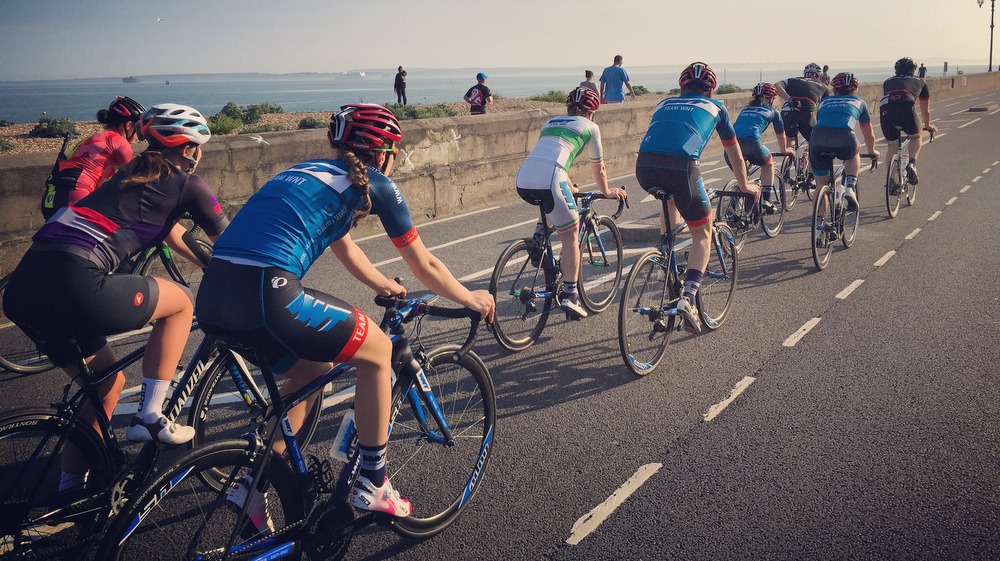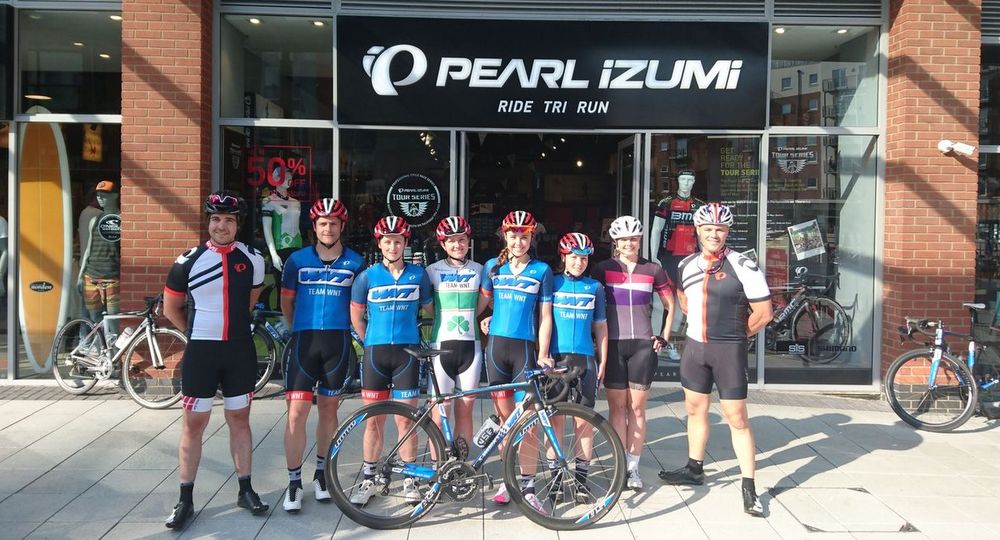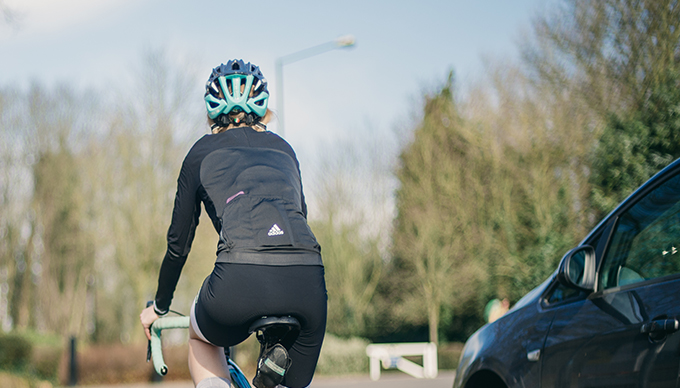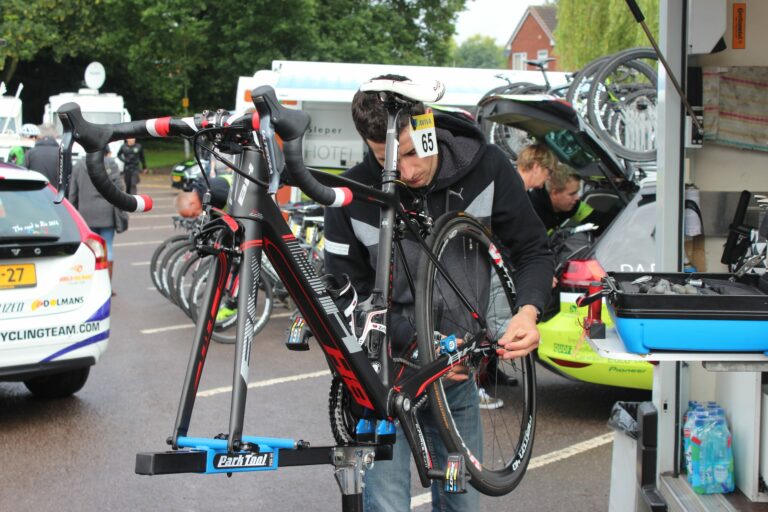Corners
Corners can present a major obstacle for beginners. The ultimate way to improve is to practice – ride with people you know can corner, and sit on their wheel, following their movements and asking for advice.
How to Corner a Road Bike at Speed
However, there are some lessons that you can learn on paper (or screen) – Tindley takes us through the basics.
Relax
It might seem counter intuitive to relax when you’re at your most nervous – but actually so much cornering technique comes from how you use your body weight, and restricting yourself by tensing can be detrimental. Tindley says: “The first thing I see a lot is people not relaxing at corners. I noticed at a recent race there was one lady who would tense up as soon as we came into any corners. Relaxing is a really big thing, relax the arms and be low on the bike.”
Look where you want to go
The saying ‘look down, and that’s where you’ll go’ is based in truth. How you hold your body weight massively affects how you take a corner, and of course if your eyes aren’t on the road ahead you have problems. Tindley says: “Looking ahead to where you want to exit the corner [is important too]. When you’re coming in, you need to be looking ahead, and going as wide as you can to hit the apex, to try and make it as straight a line as possible.”
Be aware and move with the bunch
The ideal way to take a corner is to enter wide, hit the apex, and exit wide. However, in a large bunch that’s not always an option: “I know the lines I want to take, the best line is a straight line, but in a bunch you can’t always do that. You have to corner with everyone else, it’s like you’re on rails, you have to be aware of everyone around you, who is on your inside, who is on your outside – and you have to be looking ahead as well in case someone brakes ahead of you. You have to move with the bunch.”
Get in gear
Finally, when keeping all of the above in mind, it’s easy to let gearing go out the window – but you will make your life more difficult. You’ll lose speed as you corner, meaning if you’re still in the same gear, you may find you meet with more resistance than you’d like on the exit.
How to Use Your Gears Efficiently
Tindley says: “You need to be thinking about your speed coming into the corner, and thinking about your gearing as well. For example, if I have a sharp corner before a hill, I’d drop down two gears so that when I exit I can be ready to kick out, then once I’ve got momentum going I’ll change up the gears. If you over-gear yourself coming out of the corner, it’s a lot of effort and do it a lot of times, and you’ll fatigue yourself. Think forward – you know something’s coming up – so change down the gears in advance.”





